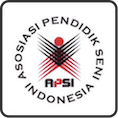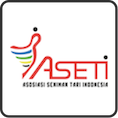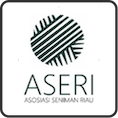COCONUT HUSK AS A BATIK COLORING MATERIAL
Abstract
This study aims to describe how the process of making the color of batik made from coconut husk and to analyze the results of coloring batik made from coconut husk. In the research method to find out how the long effect of immersion in the color solution which will be able to produce color and also find out how the process of making the color is, researchers used descriptive qualitative research methods. After collecting data through observation research instruments, interviews and documentation. The making of natural colors in batik must be meticulous and correct, the results of the research show that the process is very influential on the final result. The results obtained at intervals of 5 hours, 10 hours, 15 hours and those that were dyed dry repeatedly for 7 times of dyeing, became a color difference that did not really affect the results obtained, the researchers concluded if the cloth was soaked in a 10 hour color solution. and above it will be the same result, based on the density of the color that will be obtained. The color produced from the coconut husk extract on the fixation of alum becomes light brown, then on the fixation it turns dark brown and on the fixation of lime it becomes yellowish brown.
Keywords: coloring; coconut coir; fixation.
Abstrak
Penelitian ini bertujuan untuk mendeskripsikan bagaimana proses pembuatan warna batik berbahan sabut kalapa dan menganalisis hasil dari pewarnaan batik berbahan sabut kelapa. Dalam metode penelitian untuk mengetahui bagaimana pengaruh lama dalam perendaman larutan warna yang akan dapat menghasilkan warna dan juga mengetahui bagaimana proses pembuatan warna tersebut, peneliti menggunakan metode penelitian Kualitatif Deskriptif. Setelah dilakukan pengumpulan data melalui instrumen penelitian observasi, wawancara dan dokumentasi. Pembuatan warna alami pada batik harus dengan teliti dan benar, hasil penelitian menunjukkan bahwa pada proses sangat berpengaruh pada hasil akhirnya. Hasil yang diperoleh pada interval waktu 5 jam, 10 jam, 15 jam dan yang dicelup kering berulang-ulang sebanyak 7 kali pencelupan, menjadi perbedaan warna yang tidak begitu begitu berpengaruh pada hasil yang di dapatkan, peneliti menyimpulkan jika kain direndam dalam larutan warna 10 jam keatas itu akan menjadi hasil yang sama saja, berdasarkan kepekatan warna yang akan didapatkan. Warna yang dihasilkan dari ekstrak sabut kelapa pada Fiksasi tawas menjadi warna coklat terang, kemudian pada Fiksasi tunjung menjadi coklat tua dan pada Fiksasi kapur menjadi coklat kekuningan.
Kata Kunci: pewarnaan; sabut kelapa; fiksasi.
Keywords
Full Text:
PDFReferences
Fitriah, Hidayatul Dan Fajar Ciptandi, “ Pengolahan Limbah Sabut Kelapa Tua Sebagai Pewarna Alam Pada Fesyen”, Jurnal E-Proceeding Of Art & Desaign, Vol.5, No.3 Desember 2018,2537.
Hartono, Edi Tri, 2013. Mengolah Sabut Kelapa. Yogyakarta : Arcita
Kina, 2013. Batik Nusantara Batik Of The Archipelago. Jakarta : Pusat Komunikasi Publik
Lestari, Suaerna Dwi. 2012. Mengenal Aneka Batik , Jakarta Timur:Pt Balai Pustaka.
Lisbijanto, Herry. 2013. Batik. Yogyakarta: Graha Ilmu.
Warisno, 2003. Budi Daya Kelapa Genjah. Yogyakarta: Kanisius.
DOI: http://dx.doi.org/10.26887/mapj.v4i1.1687
DOI (PDF): http://dx.doi.org/10.26887/mapj.v4i1.1687.g674
MAPJ Indexed By:
Melayu Arts and Performance Journal 
E-ISSN: 2656-3509| P-ISSN:2656-0232 | DOI: 10.26887/mapj Website: http://journal.isi-padangpanjang.ac.id/index.php/MAPJ/index
Email: jurnalmapj@gmail.com | redaksimapj@isi-padangpanjang.ac.id
Editor in Chief: Dr. Dede Pramayoza | Managing Editor: Saaduddin, M.Sn
Publisher: Program Pasca Sarjana ISI Padangpanjang
Jalan Bahder Johan Padangpanjang 27128
Phone: (0752) 82077, Fax: (0752) 82803

Melayu Arts and Performance Journal (MAPJ) is licensed under a Creative Commons Attribution-NonCommercial 4.0 International License

















